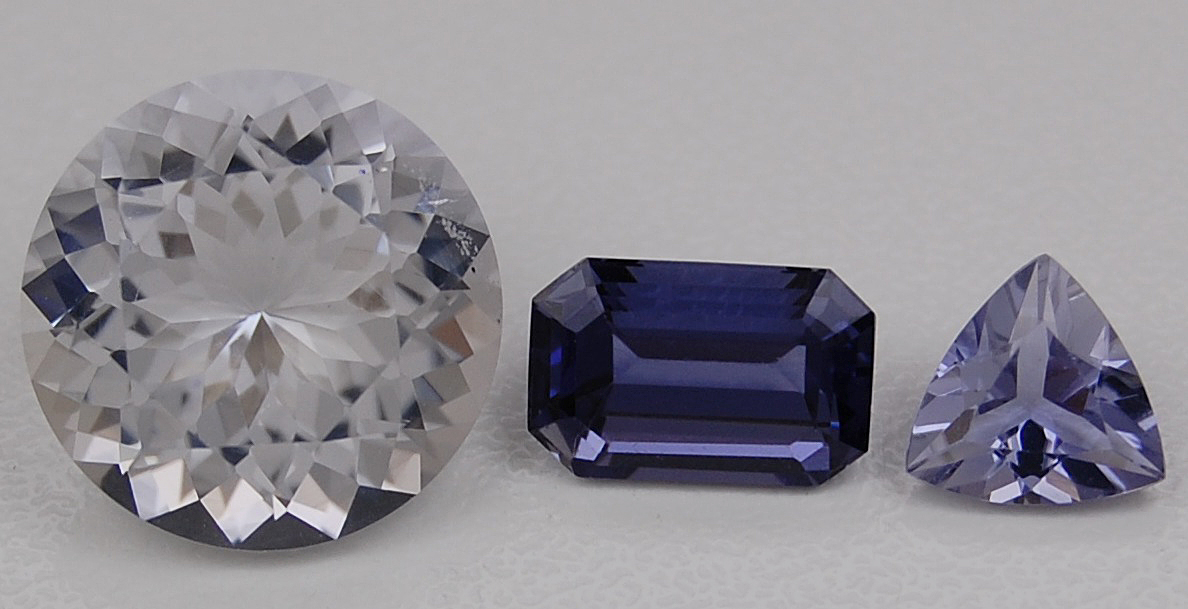
Introduction: Iolite is a mineral species. Mineralogists refer to the material as cordierite. Pictured above from left to right, 10.93 ct colorless round, 3.15 ct bluish-purple emerald cut and 1.25 ct violet trillion.
Colors: Blue, bluish-purple, colorless, yellow, brown. It is intensively pleochroic.
Clarity: Iolite is of Type II clarity. Gems of this type typically grow with some minor inclusions in nature that may be eye visible but usually are well hidden or require magnification. Crystals of apatite and zircon, the latter with pleochroic haloes are common inclusions. There can also be dust like masses of tiny crystals and sometimes red hematite plates in parallel orientation known as bloodshot iolite.
Stone Sizes: Iolites are usually less than 10 carats although gems over 30 carats have been reported.
Localities:
-India, Tanzania, Brazil, Sri Lanka, Namibia, Burma and Madagascar
Treatments:
-None
Gemology:
-Refractive Index: 1.542-1.551 (+0.045, -0.011)
-Birefringence: 0.008 to 0.012
-Optic Character: Doubly refractive, biaxial negative
-Dispersion: 0.017
-Specific Gravity: 2.61 (+/- 0.05)
-Hardness: 7 to 7.5
-Toughness: fair
-Chemical Composition: Mg2Al4Si5O18
-Cause of Color: Iron
-Fluorescence: inert
-Absorption Spectra: The spectrum observed varies with direction of the crystal. Iolite shows an iron spectrum with weak bands at 645, 593, 585, 535, 492, 456, 436 and 426 nm.
-Cleavage: distinct in one direction
-Phenomena: Chatoyancy (uncommon) and asterism (rare)
Name: Iolite is from the Greek, ios (violet) and lithos (stone).
Dates: Iolite is designated as the gem for the 21st wedding anniversary.
Care: Ultrasonic and steam cleaners are risky. Warm, soapy water is safe.
To see available iolites, click here.
